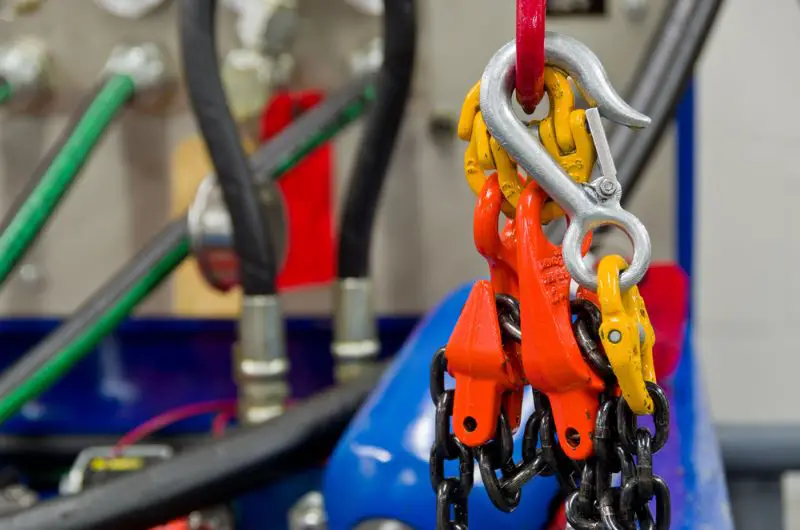Click here to get this post in PDF

In the rapidly evolving world of manufacturing, the role of rigging is becoming increasingly pivotal. As industries seek to optimize their operations and ensure safety, rigging systems have emerged as critical components that drive efficiency and safeguard workers. From lifting heavy materials to ensuring precise placement, rigging solutions play a fundamental role in modern manufacturing environments. This article explores how rigging contributes to both efficiency and safety in today’s manufacturing landscape, with a spotlight on the indispensable role of sling manufacturers.
Understanding Rigging in Manufacturing
Rigging involves the use of various equipment and techniques to lift, move, and position heavy materials and components within a manufacturing setting. This process is vital for handling large or cumbersome items that cannot be easily moved manually. Rigging systems typically include components such as slings, hooks, chains, and hoists, all working together to ensure that materials are moved safely and efficiently.
Enhancing Efficiency Through Rigging
One of the primary benefits of rigging in modern manufacturing is the significant boost it provides to operational efficiency. Rigging systems enable the swift and precise movement of heavy materials, reducing the time and labor required to complete tasks. For instance, in a factory where large machinery or raw materials need to be relocated frequently, rigging equipment such as cranes and hoists streamline the process, minimizing downtime and increasing productivity.
In addition to speeding up material handling, rigging systems also improve workflow by allowing for better organization and positioning of materials. By using rigging techniques, manufacturers can ensure that components are placed exactly where they are needed, facilitating smoother assembly processes and reducing the risk of errors.
Moreover, modern rigging solutions are often designed with versatility in mind. Advanced rigging equipment can be adjusted to handle various load sizes and shapes, making it adaptable to different manufacturing needs. This flexibility further enhances efficiency by allowing manufacturers to use the same rigging systems for multiple tasks, thereby optimizing resource utilization.
Prioritizing Safety with Rigging
Safety is a paramount concern in manufacturing, and rigging plays a crucial role in maintaining a safe working environment. Properly designed and maintained rigging systems help prevent accidents and injuries by ensuring that heavy loads are moved and secured safely. This is particularly important in industries where large or hazardous materials are handled regularly.
One key aspect of rigging safety is the use of high-quality components. Rigging equipment must be capable of withstanding the stresses and strains associated with lifting and moving heavy loads. This is where the role of sling manufacturers becomes essential. Sling manufacturers produce slings that are specifically engineered to handle various load capacities and types, ensuring that they can perform reliably in demanding environments. High-quality slings are critical for preventing equipment failure and reducing the risk of accidents.
Additionally, proper training for personnel involved in rigging operations is vital for safety. Workers must be knowledgeable about rigging techniques, equipment handling, and safety protocols. By providing comprehensive training and adhering to safety standards, manufacturers can further mitigate risks and ensure that rigging operations are conducted safely.
Innovations in Rigging Technology
The rigging industry has seen significant advancements in recent years, with new technologies enhancing both efficiency and safety. Innovations such as smart rigging systems and advanced load monitoring solutions are transforming how rigging is performed in manufacturing.
Smart rigging systems incorporate sensors and data analytics to provide real-time information about load conditions and equipment performance. This technology allows for better monitoring and control of rigging operations, helping to identify potential issues before they become problems. For example, sensors can detect if a sling is approaching its load limit, allowing operators to take corrective actions and prevent overload situations.
Load monitoring solutions also contribute to safety by providing detailed insights into load distribution and stress levels. This information helps ensure that rigging equipment is used within its safe working limits, reducing the risk of equipment failure and accidents.
The Future of Rigging in Manufacturing
As manufacturing continues to evolve, the role of rigging will remain crucial in ensuring both efficiency and safety. Future developments in rigging technology are likely to focus on further enhancing automation, connectivity, and data-driven decision-making. For instance, the integration of robotics and automation in rigging operations could streamline material handling processes even further, while advanced data analytics could provide deeper insights into rigging performance and safety.
Furthermore, sustainability will become an increasingly important consideration in rigging. Manufacturers are likely to seek eco-friendly rigging solutions that minimize environmental impact while maintaining high performance and safety standards. This shift toward sustainability aligns with broader industry trends and reflects a growing awareness of environmental responsibility.
Conclusion
In modern manufacturing, rigging is a vital component that combines efficiency and safety to support complex operations. By enabling the effective handling of heavy materials and ensuring secure movement, rigging systems enhance productivity and safeguard workers. Sling manufacturers play a key role in this equation, providing high-quality slings that are essential for reliable rigging operations. As technology advances and manufacturing practices evolve, the importance of rigging in achieving operational excellence and maintaining a safe working environment will only continue to grow.
You may also like:
Soap Manufacturing For Different Industries: Tailoring Products To Market Needs
Bonx raises $8.6 million to champion European manufacturing with market-leading AI
Image source: Depositphotos.com
